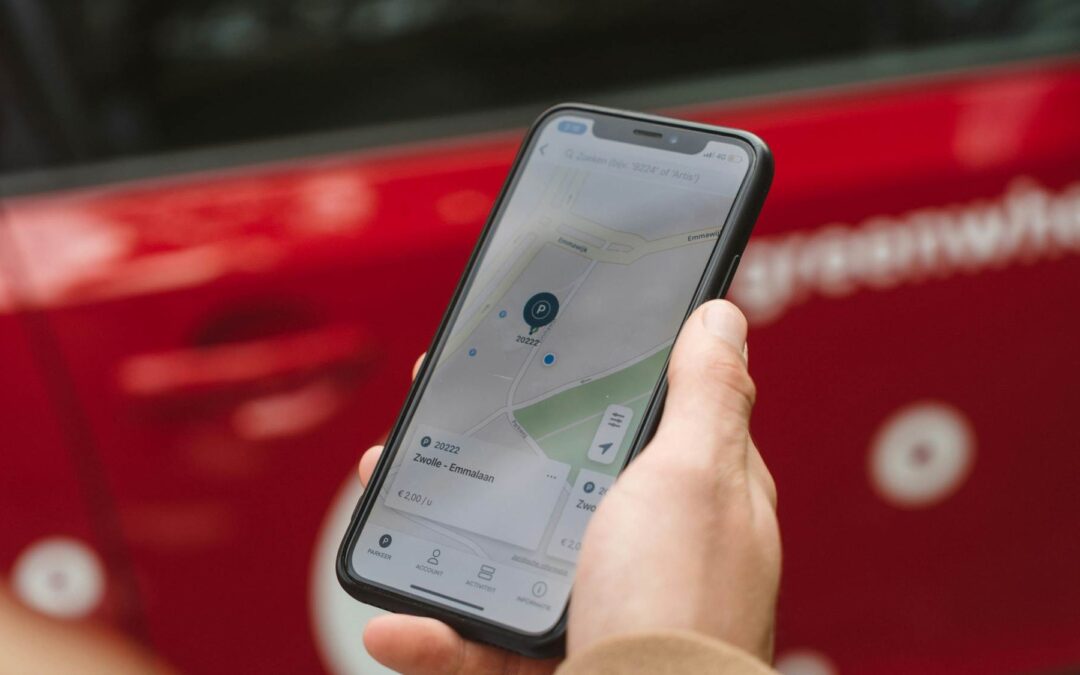What are the best tracking devices for you? Well, there are a few factors to consider.
Firstly, do you even need one? If you’re one of the fortunate few whose possessions seem perpetually glued to them, you’re in the wrong place. The rest of us are out here losing things and we need assistance.
But that’s ok. We live in a society where an increasing number of items are deemed necessary to have on your person at any time. Combine this with modern life’s busy and overstimulating nature, and you have a recipe for misplacement.
Fortunately, there is a tech solution to this very human problem — tracking devices.
So, what are these wonderful creations? Which are the best tracking devices, and how do they work?
Let’s take a look.

What are tracking devices?
Tracking devices are handy gadgets you attach to your belongings. If and when you lose the item, you can find the tracking device (and the item in question) via an app.
There are two different types of tracking devices: Bluetooth and GPS. Although the terms are often used interchangeably, they are two distinct products, and understanding the differences before going tracker shopping is essential.
Bluetooth Trackers
Generally, when talking about tracking devices for personal possessions, we’re referring to Bluetooth trackers. Relatively inexpensive, these small, lightweight devices rely on Bluetooth signals from mobiles to transmit their location.
Either this can be your mobile device, or if the tracker is out of reach, that of compatible devices passing by. Accuracy varies, so Bluetooth trackers also have a sound feature that allows you to zone in on their whereabouts.
The range of Bluetooth tracking devices varies, usually between 30 and 100 feet, although physical objects like walls and buildings can scupper signals. While their limited range and reliance on other devices make locating them in remote areas challenging, it ensures affordability and a healthy battery life.
Therefore, if you need help finding your keys at home (or if you’re only planning on travelling in populated areas), Bluetooth trackers are the one for you.
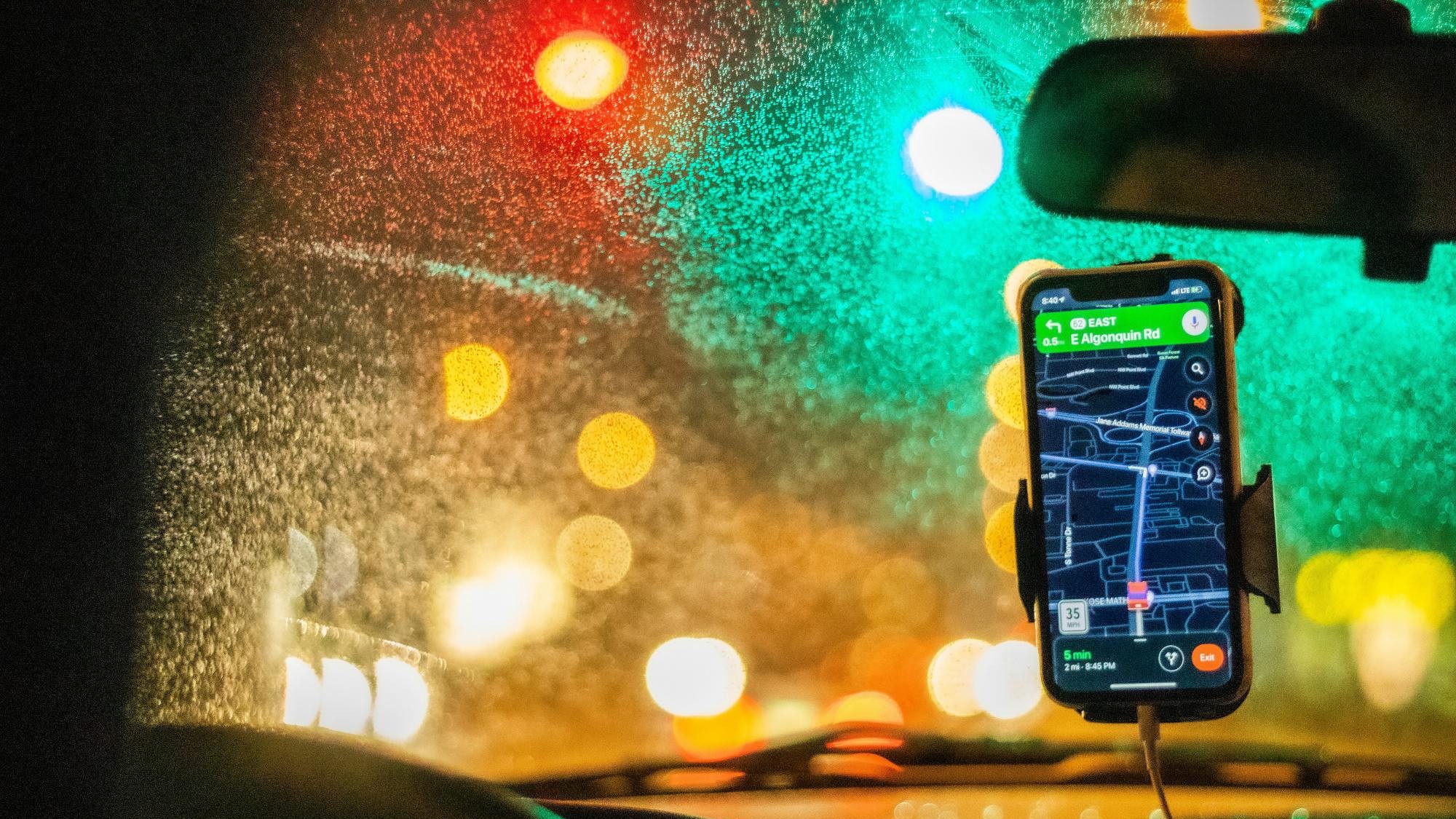
GPS Trackers
On the other hand, GPS trackers rely on signals from satellites to relay their location, much like a mobile phone. They are far more reliable (if they have a signal) as they do not lazily rely on other mobile devices. However, the constant work is exhausting, vastly reducing battery life.
The increased accuracy also makes them larger, costlier and therefore more impractical for everyday applications like trying to find your keys for the third time that day.
While they are often employed for more critical uses, such as locating stolen vehicles or keeping track of loved ones, they can be used for valuable personal items.
The Best Tracking Devices
With all this in mind, NotLost has explored the best tracking devices on the market right now. Our research has led us to three options: two Bluetooth trackers (one for Android and one for Apple) and a GPS tracker most suitable for locating lost possessions.
So, without further preamble, let’s get into it.
The Best Bluetooth Tracking Devices For Apple: AirTag
Overview & Design
Probably the most well-known tracking device, AirTags are Apple’s solution to misplaced possessions – if you’re an iPhone user, that is. AirTags are small, lightweight, circular devices 1.36 inches in circumference and 0.31 inches high. While the simple design is handy, it lacks a lanyard hole, so you’ll have to purchase an add-on to attach to a keyring.
Setup
As with many Apple devices, setup is blissfully easy. All it requires is to hold your tag to your iPhone and Apple’s dark magic connects them. Now, simply name it on the Find My app, and you’re ready to start losing things.
How it works & additional features
If you are within 40 feet of your Airtag, you can press the location button on the Find My app, which will provide the exact location thanks to the Airtag’s ultra-wideband (UWB) capabilities. It will also let out a chirping noise to direct you goalward, although some criticism has been levelled at this sound being too quiet and short-lived.
However, the nature of lost things means they are not always in your vicinity. Thankfully, Airtags benefit from harnessing the extensive ecosystem of iOS devices, so if you plan on losing something in a populated area, you stand a fighting chance of getting it back.
Out-of-reach Airtags can connect with nearby Apple devices up to 100 feet away, providing the user with an approximate but accurate location for you to begin your scavenger hunt.
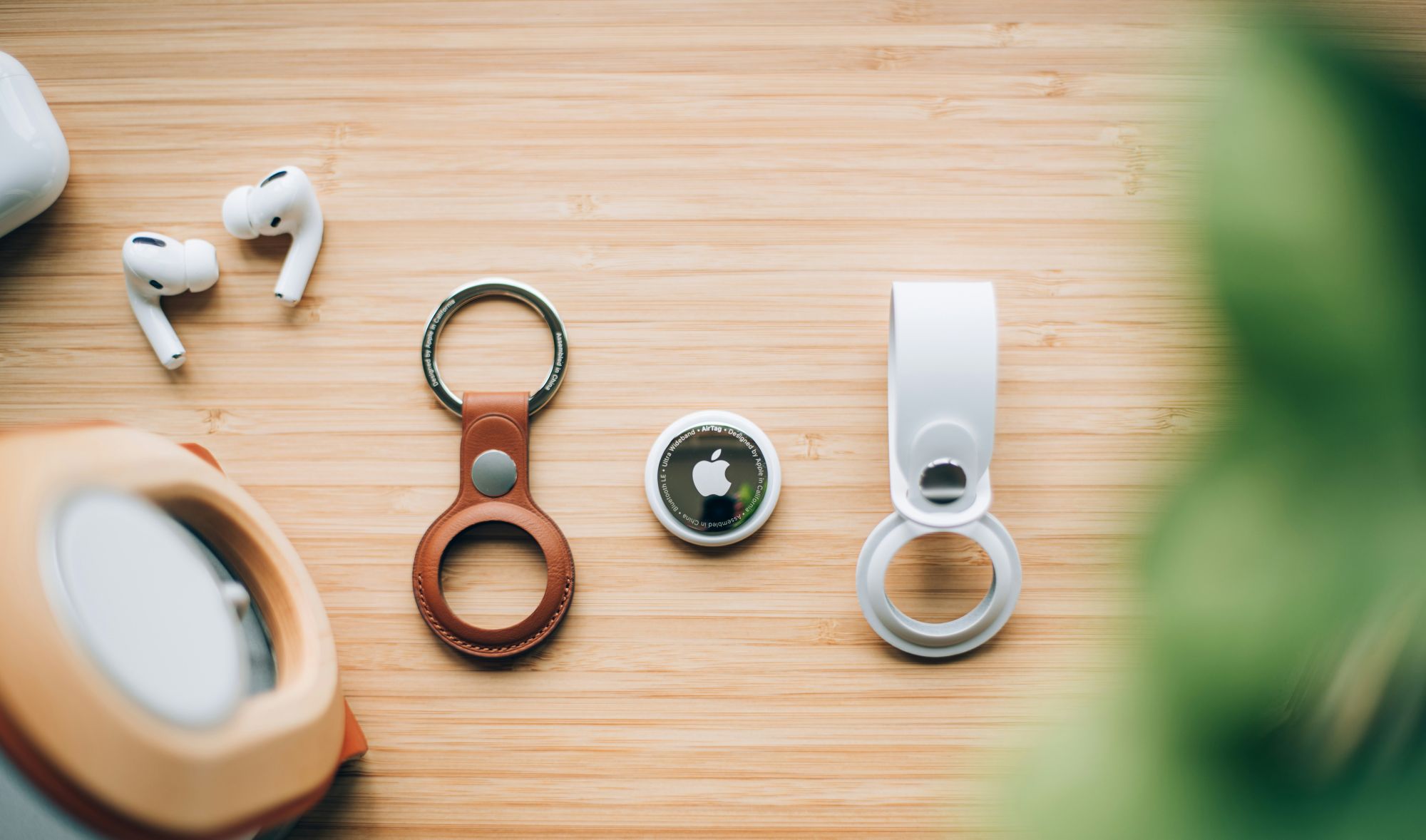
Third-party sharing
One of the best features of AirTags is that they allow you to easily share their location with a third party via the Find My app. But why would you want to do such a thing? Well, you’ll be glad of this feature if you use your AirTag to locate your suitcase and are trying to relay its location to airline staff.
In fact, many airlines have partnerships with Apple to facilitate information sharing and ensure you can track down lost luggage should it go astray.
Price & Battery life
AirTags battery life can last up to 18 months, but even if you keep hold of it long enough for it to run dry, you can purchase a replacement, which isn’t an option for all Bluetooth tracking devices.
While we wouldn’t describe them as expensive, AirTags aren’t cheap either. A single tag costs £35 direct from Apple (although we found them for as low as £28 on Amazon and eBay). You can also reduce the cost by purchasing a four-pack, with the price per tag ranging from £23 to £30.
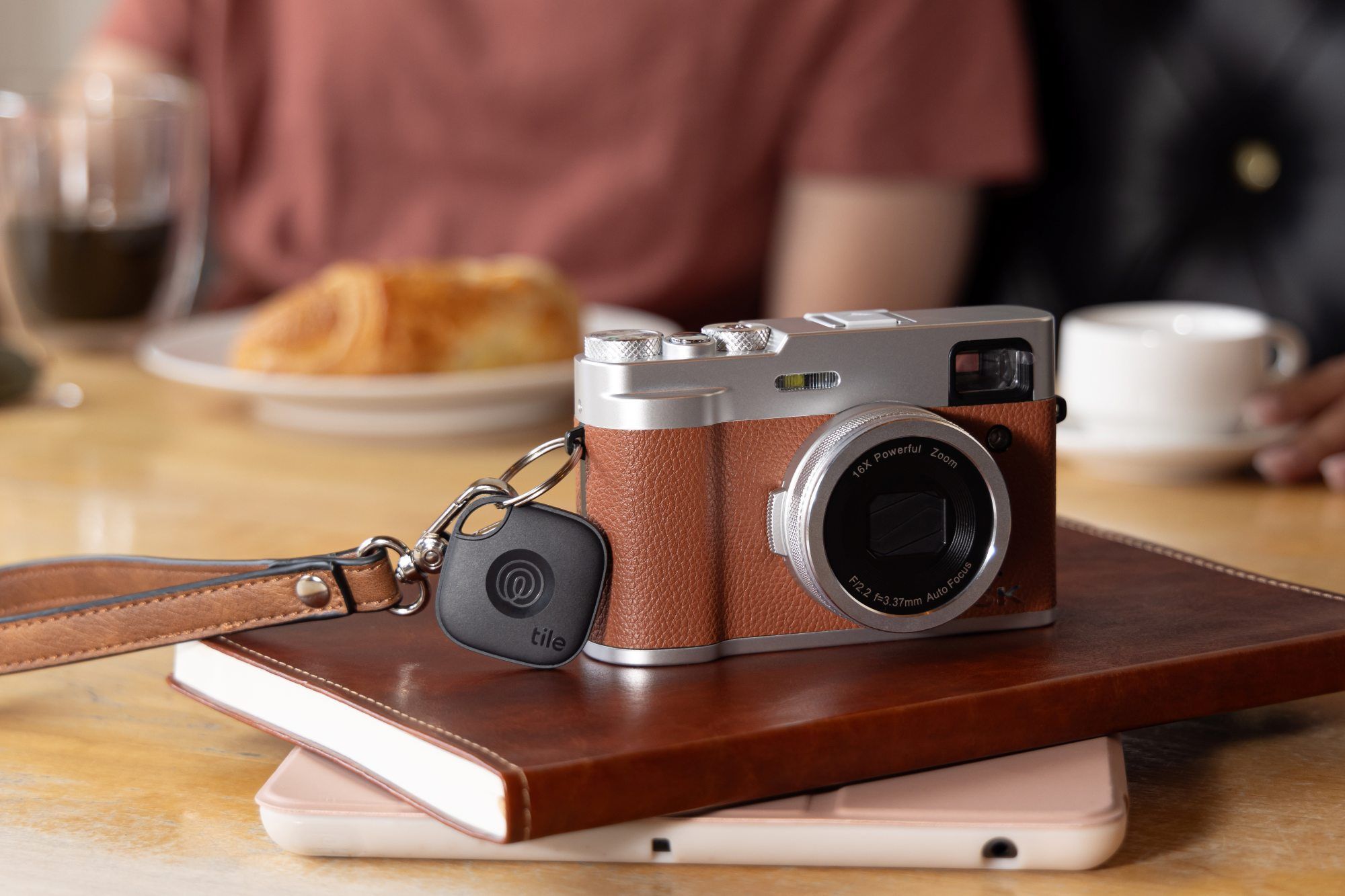
Best Bluetooth Tracking Device For Android: Tile
Overview & Design
Tracking devices aren’t just for Apple advocates. Tile represents the best option/s for Android users/item losers and offers a wide range of devices compared with AirTags uniformity. You can see details of the four different types of Tile devices below and their associated costs:
Pro: Tile’s tracker with the longest range and loudest noise.
Sticker: Tile’s smallest tracker with an adhesive back.
Mate: Tile’s mid-range tracker, perfect for everyday use.
Slim: Tile’s thinnest tracker, ideal for slipping in wallets.
Setup
Despite not being as seamless as AirTag setup, Tile isn’t anything to get too worked up about. You will need to download the Tile app, register for an account, login and then manually add your Tile device via the instructions on the app.
How it works & additional features
Despite being compatible with both Apple and Android devices for the user, Tile devices can only be picked up by third-party phones that have the Tile App downloaded and specific permissions set. This means that its location is less likely to be broadcast by passers-by than AirTags when the user’s device is out of reach.
However, when at home, Tile does have some strong points. Firstly, it makes a much louder and more prolonged sound when called into action. It also has two convenient features.
Two-way street
Well, let’s say your Tile is attached to your keys. If you have your phone but not your keys, you simply log onto the app, tap the device you want to locate, and follow that sweet chirping.
But imagine you have your keys but can’t find your damn phone. Worry not, Tile devices have a button you can double-tap, which makes your phone ring.
Did you leave something?
Tile devices also allow you to set up an alarm when you leave the house without them. This means that if you leave home without your keys (with a Tile device attached to them), your phone will receive a notification urging you to turn back around and pick them up. It’s a nice touch.
Price & Battery Life
It’s also important to note that those opting for Tile Pros need to pay a subscription of £2.99 per month or £29 per year to access its more advanced features, which, if you’ve already forked out for Tile Pro, you probably will. We’ve listed the prices of all devices alongside their battery life below.
| Pro | Sticker | Mate | Slim | |
| Price | £34.99 | £24.99 | £24.99 | £29.99 |
| Battery | 1 Year (replaceable) | 3 years (non-replaceable) | 3 years (non-replaceable) | 3 years (non-replaceable) |
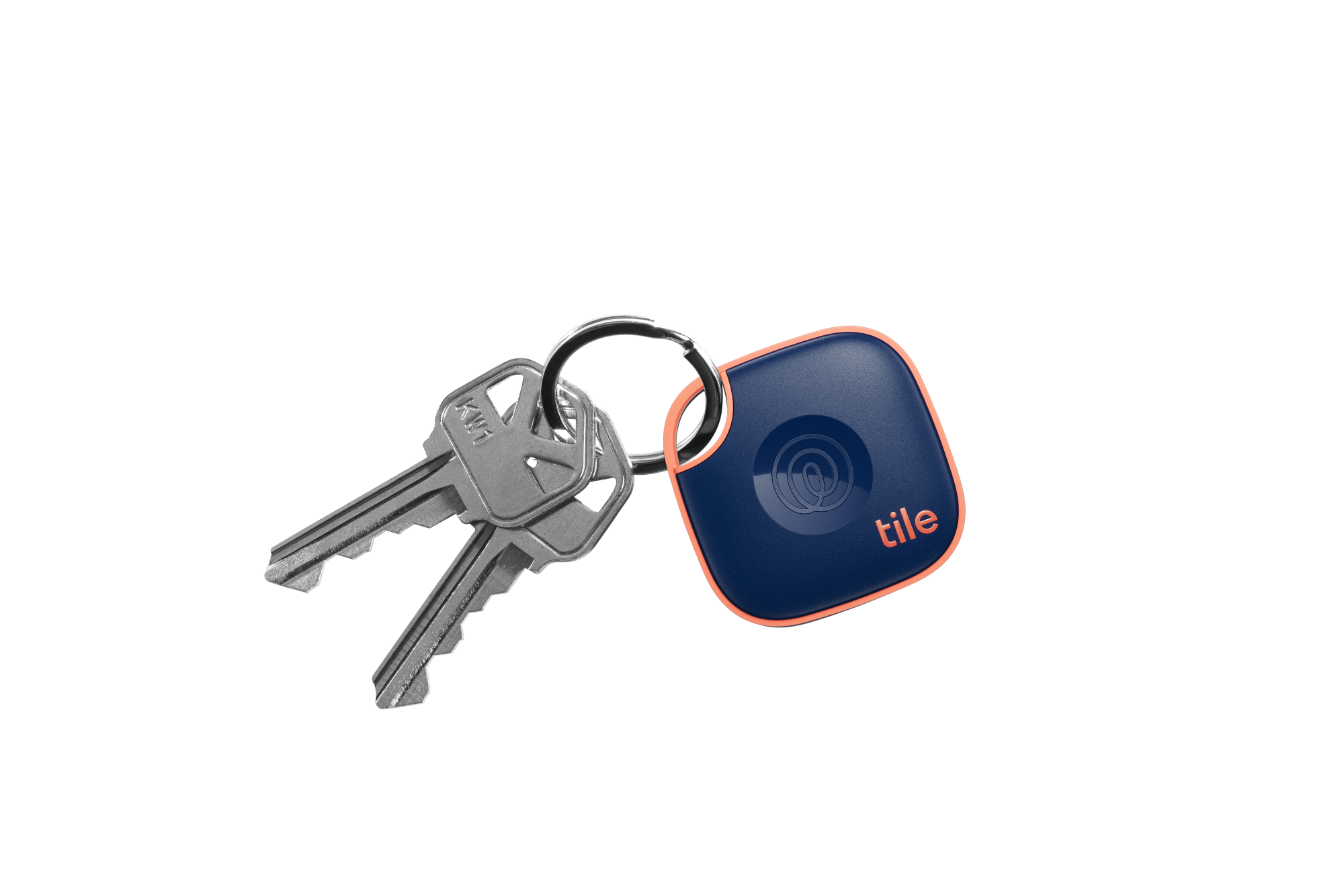
Best GPS Tracking Device
But what if you need something with a bit more oomph? Perhaps that suitcase of Ming Dynasty vases is too valuable to rely on passing Bluetooth signals. In that case, you need a proper GPS tracker.
The issue is that most of these devices are clunky, expensive, and designed to monitor high-value items like cars, dogs, or grandma. That being said, we have found one handy and inexpensive model that could be used as an alternative to Bluetooth trackers.
Tack
Overview & Design
At only 30g, Tack is positively featherweight compared to other GPS trackers. But, it still packs a punch, with its diminutive size and excellent features making it an ideal GPS tracker for lost possessions. As with most GPS trackers, it requires a subscription, with the standard and premium plans offering different levels of service.
Setup
Tack makes things simple. Simply scan the QR code on the back of your device and follow the instructions. Because the Tack GPS tracker outsizes its Bluetooth cousins, it’s not feasible to attach to your phone or keys. However, from a lost property perspective, the device could easily be kept in a bag or suitcase for pinpoint accuracy.
How it Works & Features
Tack uses GPS tracking to provide its whereabouts via the app. Its exact location is updated at periodic intervals, meaning depending on which mode the device is set to, and which subscription you opt for, you will receive updated coordinates every 1-60 minutes.
Four modes
Firstly, it has four modes—power-saving, standard, active, and emergency—that trade off battery life against tracking accuracy and frequency. For example, under the standard plan, the active mode will update the location every 10 minutes, whereas the emergency mode will update every two minutes. The more frequent the updates, the greater the battery drain.
Vertical challenge
Perhaps more impressive is that Tack can measure and relay vertical distance. One of the main drawbacks of trackers, in general, is they cannot tell you if the device is on a different floor, leading to multi-story mixups. Tack’s elevation finder eradicates this common issue, informing you whether you need to go up or down.
Battery life
GPS trackers have significantly worse battery life than their Bluetooth counterparts. Frankly, it’s because they work that much harder. However, Tack does offer a very reasonable average 30-day lifespan before you need to charge it, but how long it lasts depends on what mode you have it on.
Price
As with battery life, the price of GPS trackers is another drawback. Tack GPS Plus (which is needed in the UK) costs £65 for the device, but, as with most GPS trackers, there is also a subscription fee. Costs for both the standard and premium plans (plus the relevant features) are available below.
| Plan | Standard | Premium |
| Cost | £27 – £35 per year (minimum one year) | £47 – 54 per year (minimum one year) |
| Emergency Tracking Interval | 2 minutes | 1 minute |
| Active Tracking Interval | 10 minutes | 5 minutes |
| Standard Tracking Interval | 60 minutes | 10 minutes |
| Location History | 14 Days | 90 days |
So, what is the best tracking device for you?
While picking between these three superior devices might seem like a challenge, which one you opt for is largely dictated by your situation. For most people, Bluetooth trackers are going to be the right option.
AirTags are probably a more well-rounded tool, so if you’re an Apple advocate, they are your best bet. However, Tile’s four different models provide a fantastic alternative for Android users.
If, on the other hand, what you need to keep hold of is immensely valuable (e.g., a bag filled with solid gold), then Tack’s GPS tracking device might be worth exploring.
